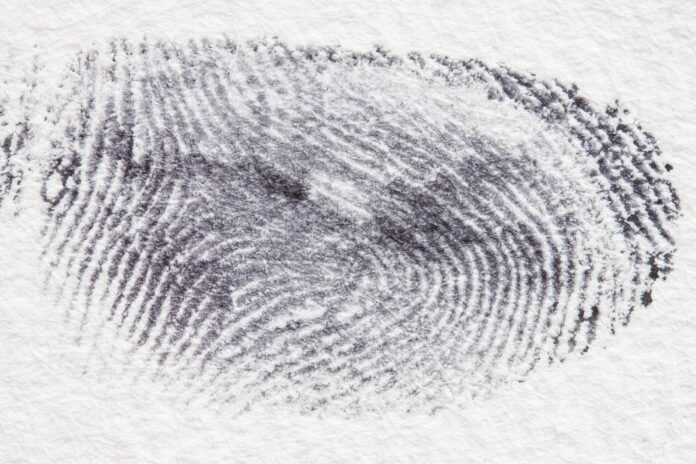[ad_1]
Abstract
Forensic technology is advancing at a remarkable pace, completely changing how investigators solve crimes and protect evidence. Today, forensic sketching is significantly more sophisticated, thanks to AI-powered methods and advanced facial recognition tools. Investigators can take even vague witness descriptions and quickly whip up realistic images of suspects—no longer relying only on an artist’s interpretation. This leap forward is helping solve cases faster and with greater accuracy, while also reducing the risk of mistakes due to human bias.
Preserving evidence has also undergone an upgrade. Techniques like blockchain spectroscopy now enable digital records that are virtually impossible to tamper with, providing a trustworthy, time-stamped trail that shows who handled each piece of evidence and when. With advanced data forensics and cloud storage, essential files and digital evidence are kept safe and can be accessed quickly by crime labs or courts, regardless of their location.
The real game-changer is how artificial intelligence, secure cloud systems, and new tamper-proof technologies are working together to protect the integrity of criminal investigations. These tools don’t just help solve crimes—they make sure evidence is secure and reliable in court. New digital protocols and intelligent systems are actively fighting against risks like digital manipulation or accidental data loss.
Researchers are continually finding ways to enhance these systems, identifying and mitigating bias in AI, and ensuring they remain secure against ever-evolving threats. By using the latest technology and learning from real-life cases, forensic teams are setting new standards for speed, transparency, and fairness. All these innovations mean both investigators and the justice system can work with more confidence, knowing evidence is protected and trustworthy every step of the way.
Introduction
Forensic science serves as the backbone of criminal investigation and identification, linking suspects to crimes and establishing their innocence. Sketching suspects’ likenesses and preserving volatile or physical evidence are two vital pillars in the process. Traditional methods, although time-tested, suffer from delays, subjective Bias, and risk of evidence degradation. With increasing reliance on retail data and automated systems, forensic professionals face both opportunities and challenges as new technologies reshape the investigation process. This review aims to assess the trajectory of forensic sketching in evidence preservation methods, presenting an objective evolution of current advancements, operational challenges, and future direction crucial to forensic experts.
Literature review:
Historic Perspective;
Forensic Sketching: Traditionally, forensic sketching depends on the trained artists’ sketching of witness statements in two phases. These sketches are often hand-drawn and could be incorrect. The process may be slow, and the data may be susceptible to errors. [1]ijirt [2]ijirset
Evidence Preservation: Techniques focused on physical control, including securing crime scenes, collecting samples, using sterile containers, and maintaining the chain of custody through the use of logbooks. The preservation ensured evidence integrity but was constrained by material limitations and human errors.[3]dfrws
Modern Evolution;
Automated Sketching: Software solutions like Face Trace, utilising convolutional neural networks CNN and deep learning, enable conversion of eyewitness testimonies and surveillance feeds directly into composite images, improving both accuracy and speed in subject identification.[4]ijirset, [5]drsatendra
Digital Evidence Handling: The rise of forensics and spectroscopic analysis has revolutionised preservation with techniques such as RAM analysis, X-ray fluorescence of materials, and age dating of bloodstains using ATR FTIR and UV vis spectroscopy.[6]spectroscopyonline,[7]jaroeducation
Advances & challenges:
Modern Sketching Materials;
AI-Driven Interfaces: Advanced platforms use CNN, facial landmark detection, and multilingual voice input for rapid, accurate sketch construction. Officers can interactively refine sketches, converting both description nulls and CCTV images to actionable leads.[8]ijirset
Machine Learning Recognition: Digital database matches sketches to mugshots (a photographic portrait of a person taken from the shoulders up, typically after they have been arrested), using cloud infrastructure for real-time collaboration and suspect identification. Projects like Forensic phase sketch construction and recognition combine arts with machine learning and improve usability.[9]ijsrst,[10]ijirt
Direct CCTV Conversion: Technology enables the conversion of low-resolution surveillance images into recognisable sketches, mitigating limitations of clarity and angles.[11]drsatendra
Evidence Preservation Innovations;
Spectroscopy: Mobile and handheld spectroscopic tools assess bloodstain ages, analyse elemental composition of residues, and differentiate tobacco via X-ray fluorescence, delivering non-invasive, real-time data that preserves samples’ integrity.[12]spectroscopyonline
Digital Forensic Tools: Suits like Magnet AXIOM analyse computers, smartphones, and cloud data, employing AI for artefact categorisation and supporting distributed team investigations. Open-source solutions allow for rapid, adaptable examination.[13]jaroeducation
Blockchain & Tamper-proof Storage: Blockchain ledgers and tamper-proof imaging encode digital evidence with immutable fingerprints, ensuring its authenticity and integrity. Any manipulation is detectable, assuring the authenticity and chain of custody throughout legal processes.[14]eclipseforensics
Operational Challenges;
Bias & Subjectivity: AI models reduce, but do not eliminate, inherent bias from witness descriptions and procedural inconsistencies.
Digital Manipulation Risks: As evidence becomes predominantly digital, risks of alteration or data corruption require ongoing vigilance and security protocols.
Solutions / Best Practices:
Digital SOPs: Use of standardised procedures for both sketch generation and evidence storage, with strict chain of custody documentation, is essential for courtroom admissibility.[15]dfrws
Training and Education: Fusing artistic skill with technical literacy – training forensic artists to work with AI software- enhances quality and consistency.[16]ijirt
Future Directions:
Emergence of AR/VR: Virtual reality reconstructions of crime scenes and suspect facial features allow investigators to immerse themselves in cases, potentially increasing accuracy and case solvability.[17]drsatendra
Advanced Chemometrics: Real-time biochemical analysis of samples, using next-generation sensors, may allow in-field age estimation and source tracking for biological evidence.[18]spectroscopyonline
Cross-Disciplinary Integration: As forensic science further intersects with data science, legal scholarship, and engineering, innovative workflows and protocols will emerge to tackle new forms of digital crime and evidence manipulation.
Conclusion
Recent advances in forensic sketching and evidence preservation have set new standards in efficiency, reliability, and objectivity. AI-powered systems and digital tools offer investigators accuracy and speed, while innovations in spectroscopic and broken-chain methods reinforce evidence integrity against manipulations. However, evolving protocols and regular Validation are needed to address Bias and digital risks. Future-driven technologies that will continue to reshape the landscape of forensic investigation.
[ad_2]
Source link

